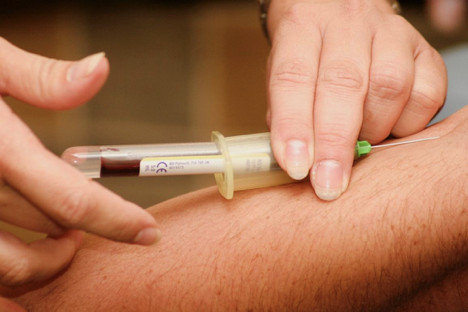
Anemia is caused when the body doesn’t produce enough red blood cells, or when red blood cells cannot efficiently deliver oxygen throughout the body. You can detect this with an anemia test kit. There are numerous potential causes of anemia, such as iron deficiency, vitamin B12 deficiency, anemia of chronic disease, aplastic anemia, anemia associated with a bone marrow disease, hemolytic disease, Sickle Cell Anemia, and others.
Anemia symptoms vary based on the cause, however, there are a number of anemia symptoms that occur in most cases.
Common anemia symptoms include:
-
Fatigue and Loss of Energy
-
Weakness
-
Pale Skin
-
Unusually Rapid Heartbeat
-
Difficulty Concentrating
-
Shortness of Breath or Headache
-
Leg Cramps
-
Insomnia
-
Chest pain
The body is constantly working to battle anemia symptoms. Symptoms can range from mild to severe depending on the cause and if the symptoms have developed over a long period of time. Some anemia symptoms are associated with specific forms of anemia.
Different Types of Anemia:
Iron Deficiency- This is the most common type of anemia across the globe. Iron deficiency occurs when your body doesn’t have enough iron to properly produce red blood cells. Iron is needed for hemoglobin production. Hemoglobin is an important part of blood and is responsible for oxygen transport throughout the body. Common anemia symptoms include cravings for paper, ice, or dirt, upward curvature of nail growth, and mouth soreness.
Vitamin Deficiency- Not only does your body need iron for red blood cell production, but it also requires vitamins such as Folate (Vitamin B9) and Vitamin B12. Without these vitamins, there is not enough blood being produced for the body. Common symptoms include tingling feeling in hands and feet, loss of sense of touch, difficulty walking, clumsiness, stiff joints, and dementia.
Anemia of Chronic Disease- Anemia symptoms can also be caused by the presence of a chronic disease such as HIV/AIDS, cancer, rheumatoid arthritis, kidney disease, and in general, chronic inflammatory diseases. Due to the broadness of potential cause, there are no specific anemia symptoms associated with chronic disease.
Aplastic Anemia– This form of anemia is rare and life-threatening and occurs when the body doesn’t produce enough red blood cells. Common symptoms include prolonged infections, easy bruising, skin rash, and prolonged bleeding from cuts.
Anemia caused by Chronic Lead Poisoning– Increased levels of lead in the body is associated with decreased iron absorption. Symptoms of lead poisoning include blue/black line along the gums, dark urine, abdominal pain, and constipation.
Anemia Associated with Bone Marrow Disease– A number of diseases such as leukemia and myelofibrosis, attack bone marrow, the area of the body responsible for producing blood. Anemia symptoms depend on the individual and can range from mild to severe.
Hemolytic Anemia– This occurs when red blood cells are destroyed faster than bone marrow can produce new cells. This form of anemia can be inherited for developed. Common Hemolytic Anemia symptoms include dark urine, dizziness, heart murmur, inability to hand physical activity, and increased heart rate.
Sickle Cell Anemia– This is an inherited condition and can be a serious form of hemolytic anemia. This is caused by a differed hemoglobin shape that causes red blood cells to become a crescent or sickle shape. These abnormally shaped blood cells die and are unable to transport oxygen. Sickle cell anemia symptoms include swelling of the hands or feet, increased bacterial infections, leg ulcers, and eye damage. Symptoms commonly develop around 5 months for infants. Adolescents and young children are more likely to develop a fever and abdominal pain. Young adults are more likely to experience leg ulcers and the death of portions of the bone (aseptic necrosis). Adults experience painful episodes due to bone and internal organ damage.
Anemia is not a contractible disease and being around individuals with anemia do not put others at risk of developing anemia symptoms.
Contact a physician if your anemia symptoms are persistent. In addition, if you have risk factors for anemia such as inadequate diet or intake of required vitamins and minerals, heavy menstrual period, hereditary anemia runs in your family, potential prolonged exposure to lead. A visit to the doctor or telemedicine consult with proper testing is necessary to make a full determination. Anemia symptoms are similar to many other illnesses and can be verified through an easy-to-use, quick anemia test kit.
*Reviewed and approved by Dr. Rob Lapporte
Get your Anemia Telemedicine Consultation NOW and get diagnosed and a prescription filled within 24 hours without ever leaving your home! FREE Overnight shipping when you use the code “FREEOVERNIGHT” at checkout. Click HERE to start feeling better now!


